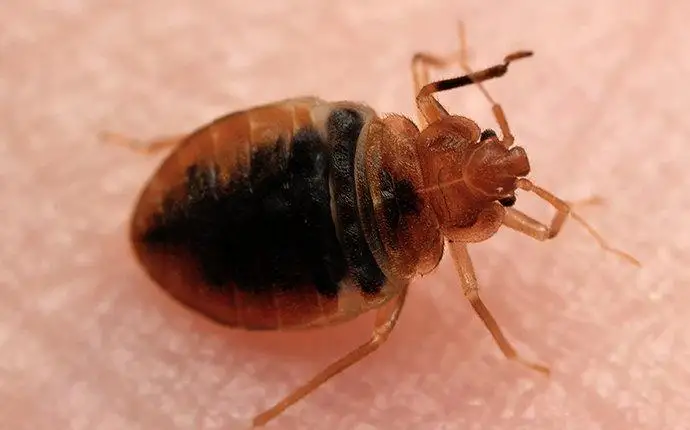It’s easy to tell you have bed bugs, right? Well, not as easy as you might think. Bed bugs are extremely tiny, and the initial bites can be minor. If your infestation begins with a batch of eggs, your initial bites will be from immature nymphs—not adult bed bugs. Those tiny little nymphs can leave slight red wounds that are easily missed. So while bed bugs bites are often the first sign of a bed bug infestation, they’re not really the best sign. Here are five signs your Raleigh home has bed bugs. We’ll save bed bug bites for last.
1. Seeing A Bed Bug
If you want to detect a bed bug infestation before you get bitten, you need to know what a bed bug looks like and where to look for it. While bed bugs can be as small as 1mm, they’re not invisible to the naked eye.
What a bed bug looks like — When a bed bug first hatches, it is pale and transparent. It has six legs, two antennas, and three body parts. It grows from 1mm to 4.5mm. As it grows, it becomes tan and eventually a rusty brown color. If you find a bed bug that has had a blood meal, it will be bloated and you will see blood in its abdomen. If you find a bed bug that has not fed, it will be flat and oval-shaped.
Where to look for a bed bug — Your bed is the first place to check for bed bugs, but it should definitely not be the last. These insects can be in other furniture items and also inside objects that get carried into your home, such as luggage, bags, and pocketbooks. These tiny insects prefer tight spaces and dark places. If you look in a duffel bag, you’re probably not going to see them crawling around. You’ll have to check the seams, cracks, and inner pockets. But you could get lucky and see one out in the open if the bag is particularly dark inside.
How to uncover bed bugs — Two tools that help with bed bug detection are a flashlight and a debit card. Use the flashlight to expose bed bugs crawling around inside dark recesses and use the card to drag along seams and creases and get the tiny insects to come out of hiding. A debit card can also expose shed skins, eggs, and feces, which are other signs of an infestation.
2. Finding Eggs
Bed bug eggs are about 1mm long and pale in coloration. You may find them individually scattered about or in small batches. These eggs aren’t likely to be out in the open. You’ll need to search tight spaces for them.
3. Finding Shed Skins
The skin of a bed bug is called a cuticle. As a bed bug develops, it sheds its cuticle several times. This shed skin material can be found out in the open or in cracks, gaps, and other tight spaces.
4. Finding Stains
Bed bugs are very good at hiding. It can be difficult, or impossible, to find these insects or their eggs. But, as bed bugs feed, they can leave behind hints that they’re in your home. Inspect your sheets, pillowcases, and fabrics for feces or blood stains.
Feces — The droppings left by bed bugs are black. They may look like specks, streaks, or soaked patches.
Blood — Bed bugs sometimes excrete blood. This can cause brown or tan stains to appear. These stains may be mixed with black excrement staining.
5. Bed Bug Bites
Let’s get back to the bites we mentioned earlier. Bed bug bites have a somewhat unique pattern. This is because each individual bed bug bites several times (often three times) as it moves across the skin. This can cause bites that fall a line or zig-zag pattern. If several bed bugs feed on you, you’ll have a group of bites that look like they follow a path across your skin. These might be as slight as small, itchy, red bumps, or as extreme as big welts.
When You Find Bed Bugs
Contact Innovative Pest Solutions for effective bed bug control in Raleigh, NC, and the surrounding region. We use the most advanced bed bugs solutions available. We’ll help you get rid of bed bugs so you can get back to having restful sleep.





